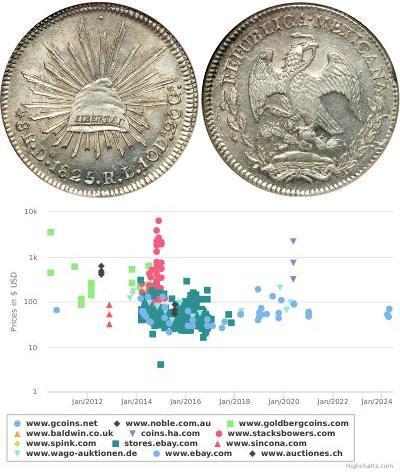(sold for $2.0)
1747, Netherlands, William IV of Orange-Nassau. Pinchbeck Brass Medal. VF-
Mint Year: 1747 References: v. Loon Verv. 239, Wurzb. 9798. Condition: Pierced (holed), somed deposits, otherwise VF+ Denomination: Medal - Willem Carel Hedrik Friso (William IV, Prince of Orange-Nassau), as Stadtholder, Admiral and Captain of the 7 Provinces (the Netherlands). Material: Pinchbeck Brass Weight: 17.07gm Diameter: 40mm
Obverse: Equestrian figure of William IV left. Legend: * . WIL . CAR . HEN . FRISO . PPR . VAN . ORANJE . & . NASSAU . 3 . MAY . 1747
Reverse:Netherlands lion on shield holding scimitar and baton, titles Stadholder, Admiral and Captain General of the Seven Provinces. Banner Inscription (motto of the Netherlands): CONCORDIA RES PARVAE CRESCUNT ("Through unity little things grow" - Union is strength!") Legend: * STADHOUDER . ADML . & KAPN . GENERAAL . VAN 7 PROVINTIEN
A stadtholder (Dutch: stadhouder), literally place holder (holding someone's place, possibly a calque of German Statthalter, French lieutenant, or Medieval Latin locum tenens), was a term for a "steward" or "lieutenant". In the Low Countries, the stadtholder was a medieval function, which during the 16th, 17th and 18th centuries developed into a rare type of de facto hereditary head of state of the thus crowned republic of the Netherlands. It is comparable with the French title Lieutenant and England's 16th century Lord Lieutenant. Additionally, this position was tasked with maintaining peace and provincial order in the early Dutch Republic. The Dutch Monarchy is a cognatic descendant of the first Stadtholder of the young Republic, William of Orange. He was the leader of the successful Dutch Revolt against the Spanish Empire.
William IV, Prince of Orange-Nassau (1 September 1711 – 22 October 1751), born Willem Karel Hendrik Friso, was the first hereditary stadtholder of the Netherlands.
William was born in Leeuwarden, Netherlands, the son of John William Friso, Prince of Orange, head of the Frisian branch of the House of Orange-Nassau, and of his wife Landgravine Marie Louise of Hesse-Kassel (or Hesse-Cassel). He was born six weeks after the death of his father.
William succeeded his father as Stadtholder of Friesland and also, under the regency of his mother until 1731, as Stadtholder of Groningen. In 1722 he was elected Stadtholder of Guelders.
William was born in Leeuwarden, Netherlands, the son of John William Friso, Prince of Orange, head of the Frisian branch of the House of Orange-Nassau, and of his wife Landgravine Marie Louise of Hesse-Kassel (or Hesse-Cassel). He was born six weeks after the death of his father.
William succeeded his father as Stadtholder of Friesland and also, under the regency of his mother until 1731, as Stadtholder of Groningen. In 1722 he was elected Stadtholder of Guelders.
In April 1747 the French army entered Flanders. In an effort to quell internal strife amongst the various factions, the States General of the Netherlands appointed William to the hereditary position of General Stadtholder of all seven of the United Provinces. William and his family moved from Leeuwarden to The Hague. William first met Duke Louis Ernest of Brunswick-Lüneburg in 1747, and 2 years later appointed him field marshal of the Dutch States Army, which later led to his being one of the regents to William's heir. On 4 May 1747 he was confirmed as Hereditary Stattholder of the United Provinces (Netherlands).
William IV was considered an attractive, educated and accomplished prince in his prime. Although he had little experience in state affairs, William was at first popular with the people. He stopped the practice of indirect taxation by which independent contractors managed to make large sums for themselves. Nevertheless, he was also a Director-General of the Dutch East India Company, and his alliance with the business class deepened while the disparity between rich and poor grew.
William served as General Stadtholder of all the Netherlands until his death in 1751 at The Hague.
Only 1$ shipping for each additional item purchased!

|
Posted by:
anonymous 2021-04-14 |
1 Forint Austria-Hungary (1867-1918) Silver Franz Joseph I ( ...
group has 15 coins / 15 prices
⇑






-300-150-Vw4KbzbiGiUAAAFRtHOWyoBd.jpg)







